#31 May 1907
Photo
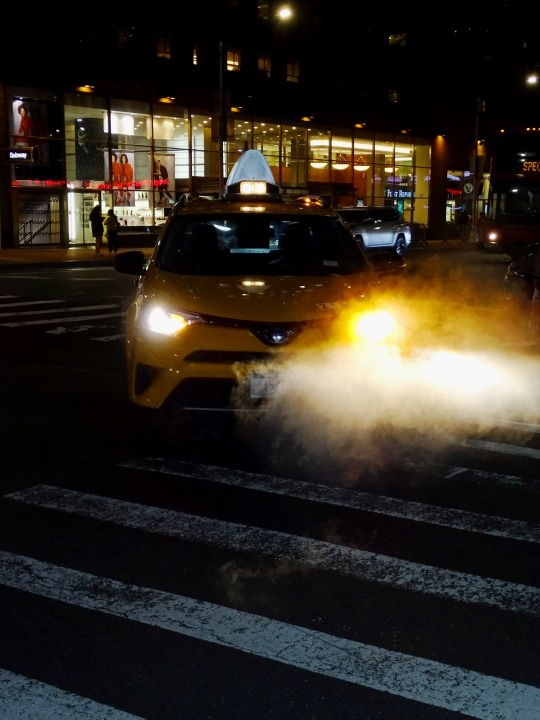
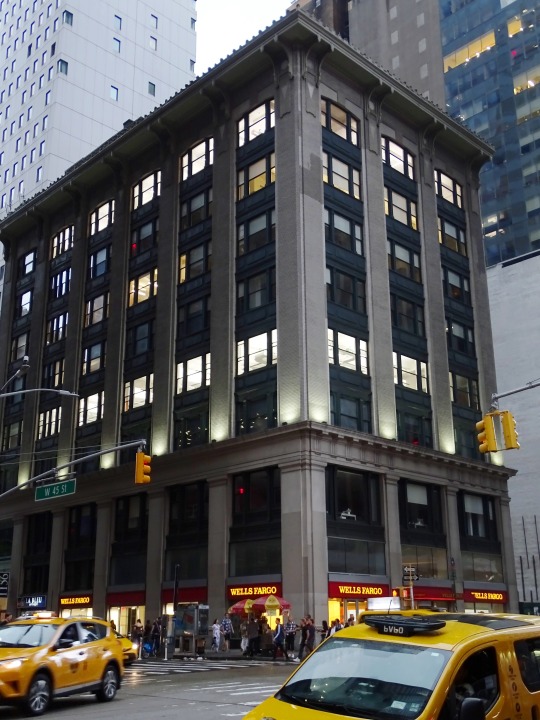

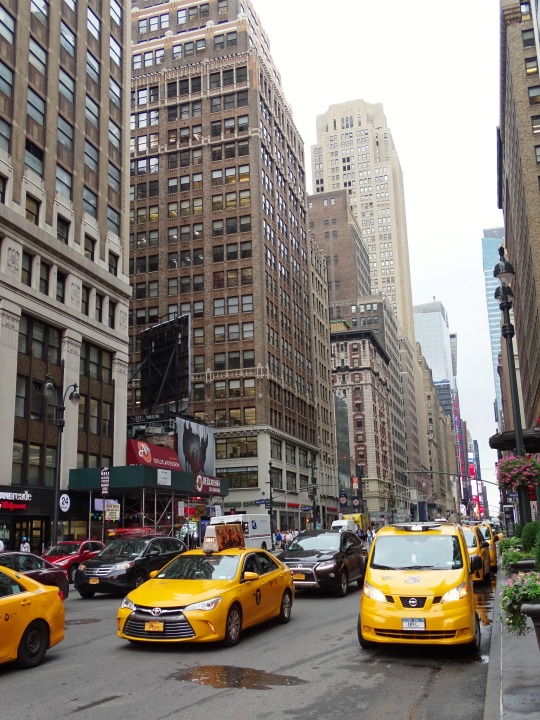

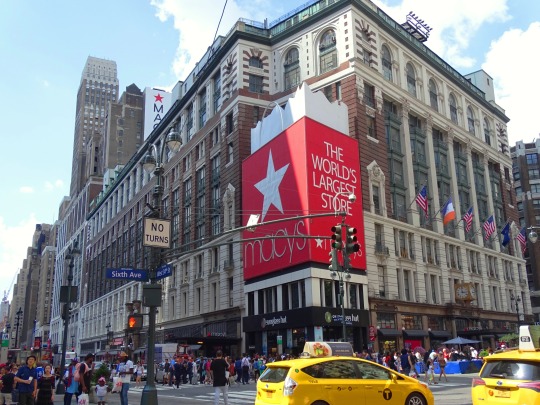

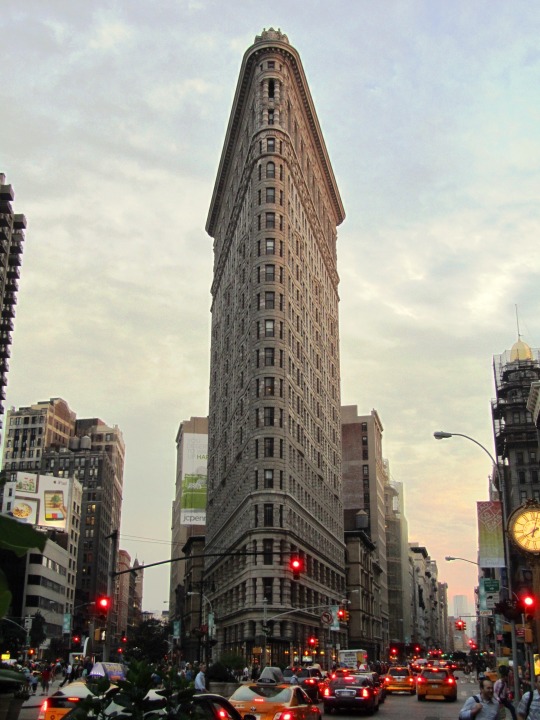


The first cabs of the New York City Taxicab Company, imported from France, began running in the city streets on May 31, 1907.
#I really love the first pic#street scene#architecture#cityscape#Manhattan#New York City#summer 2018#2019#original photography#travel#vacation#first cabs#New York City Taxicab Company#yellow cab#taxi#car#traffic#31 May 1907#115th anniversary#US history#engineering#daylight#night shot#dusk#6th Avenue#Broadway#7th Avenue#Flatiron Building#Macy's#Times Square
3 notes
·
View notes
Photo
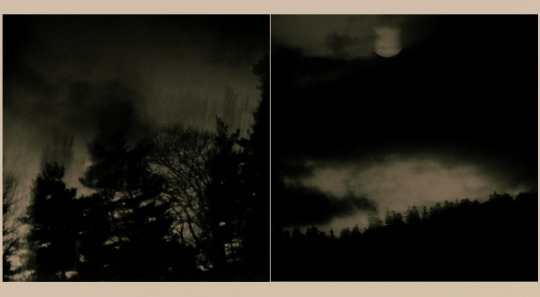
Worlds and seas pulsing
To the heartbeat of weeping sun
Down into the temple lost in the forgotton deep...
from Life Love Death the Void and the Wind
Roger Gilbert-Lecomte (May 18, 1907-December 31, 1943)
348 notes
·
View notes
Text
Some primary sources
I plan to add more whenever I find more.
Historie Parlamentaire de la Révolution Française ou Journal des Assemblées Nationales, depuis 1789 jusqu’en 1815
Volume 1 (May 1789)
Volume 2 (June-September 1789)
Volume 3 (September-December 1789)
Volume 4 (December 1789-March 1790)
Volume 5 (March-May 1790)
Volume 6 (May-August 1790)
Volume 7?
Volume 8 (November 1790-February 1791)
Volume 9 (February-May 1791)
Volume 10 (May-July 1791)
Volume 11 (July-September 1791)
Volume 12 (September-December 1791)
Volume 13 (January-March 1792)
Volume 14 (April-June 1792)
Volume 15 (June-July 1792)
Volume 16 (July-August 1792)
Volume 17 (August-September 1792)
Volume 18 (September 1792)
Volume 19 (September-October 1792)
Volume 20 (October-November 1792)
Volume 21 (November-December 1792)
Volume 22 (December 1792-January 1793)
Volume 23 (January 1793)
Volume 24 (February-March 1793)
Volume 25 (March-April 1793)
Volume 26 (April-May 1793)
Volume 27 (May 1793)
Volume 28 (July-August 1793)
Volume 29 (September-October 1793)
Volume 30 (October-December 1793)
Volume 31 (November 1793-March 1794)
Volume 32 (March-May 1794)
Volume 33 (May-July 1794)
Volume 34 (July-August 1794)
Recueil des actes du comité de salut public
Volume 1 (August 12 1792-January 21 1793)
Volume 2 (January 22-March 31 1793)
Volume 3 (April 1-May 5 1793)
Volume 4 (6 May-18 June 1793)
Volume 5 (19 June-15 August 1793)
Volume 6 (15 August-21 September 1793)
Volume 7 (22 September-24 October 1793)
Volume 8 (25 October-26 November 1793)
Volume 9 (27 November-31 December 1793)
Volume 10 (1 January-8 February 1794)
Volume 11 (9 February-15 March 1794)
Volume 12 (16 March-22 April 1794)
Volume 13 (23 April-28 May 1794)
Volume 14 (29 May-7 July 1794)
Volume 15 (8 July-9 August 1794)
Recueil de documents pour l’histoire du club des Jacobins de Paris
Volume 1 (1789-1790)
Volume 2 (January-July 1791)
Volume 3 (July 1791-June 1792)
Volume 4 (June 1792-January 1793)
Volume 5 (January 1793-March 1794)
Volume 6 (March-November 1794)
Histoire du tribunal révolutionnaire de Paris: avec le journal de ses actes.
Volume 1
Volume 2
Volume 3
Volume 4
Volume 5
Papiers inédits trouvés chez Robespierre, Saint-Just, Payan etc
Volume 1
Volume 2
Volume 3
Oeuvres complètes de Robespierre
Volume 1 (Robespierre à Arras)
Volume 2 (Les œuvres judiciaires)
Volume 3 is the correspondence, listed below
Volume 4 (Le defenseur de la Constitution)
Volume 5 (lettres à ses comettras)
Volume 6 (speeches 1789-1790)
Volume 7 (speeches January-September 1791)
Volume 8 (speeches October 1791-September 1792)
Volume 9 (speeches September 1792-June 27 1793)
Volume 10 (speeches June 27 1793-July 27 1794)
Oeuvres de Maximilien Robespierre (not the same as Oeuvres completés)
Volume 1
Volume 2
Volume 3
Oeuvres de Jerome Pétion
Volume 1
Volume 2
Volume 3
Volume 4
Oeuvres complètes de Saint-Just
Volume 1
Volume 2
Oeuvres littéraires de Hérault de Séchelles (1907)
Oeuvres de Danton (1866)
Discours de Danton (1910) by André Fribourg
Works by Desmoulins
La France Libre (1789)
Discours de la Lanterne aux Parisiens (1789)
Révolutions de France et de Brabant (1789-1791)
Volume 1 (number 1-13)
Volume 2 (number 14-26)
Volume 3 (number 27-39)
Volume 4 (number 40-52)
Volume 5 (number 53-65)
Volume 6 (number 66-79)
Volume 7 (number 80-86)
La Tribune des Patriots (1792) (all numbers)
Le Vieux Cordelier (1793-1794) (all numbers)
Jean Pierre Brissot démasqué (1792)
Histoire des Brissotins (1793)
Correspondences
Correspondance de Maximilien et Augustin Robespierre (1926)
Correspondance de George Couthon (1872)
Correspondance inédit de Camille Desmoulins (1836)
Correspondance inédite de Marie-Antoinette (1864)
Billuad-Varennes — mémoires et correspondance
Correspondance de Brissot
Lettres de Louis XVI: correspondance inédite, discours, maximes, pensées, observations etc (1862)
Lettres de Madame Roland (1900)
Volume 1
Volume 2
Correspondance inédite de Mlle Théophile Fernig (1873)
Journal d’une bourgeoise pendant la Révolution 1791-1793 by Rosalie Jullien (1881)
Memoirs
Memoirs of Bertrand Barère
Volume 1
Volume 2
Volume 3
Volume 4
Memoirs of Élisabeth Lebas
In French
In English
Mémoires de Charlotte Robespierre sur ses deux frères (1835)
In French
In English
Memoirs of Joseph Fouché
Volume 1 (English)
Volume 2 (French)
Mémoires de Brissot (1877)
Mémoires inédits de Pétion et mémoires de Buzot et Barbaroux (1866)
Memoirs of Barras — member of the Directorate (1899)
Mémoires inédits de madame la comtesse de Genlis depuis 1756 jusqu’au nos jours
Volume 1
Volume 2
Volume 3
Volume 4
Volume 5
Volume 6
Volume 7
Volume 8
Volume 9
Volume 10
Mémoires de Madame Roland
Volume 1
Volume 2
Mémoires de Louvet (1862)
Memoirs of the Duchess de Tourzel: Governess to the Children of France During the Years 1789, 1790, 1791, 1792, 1793 and 1795
Volume 1
Volume 2
Révélations puisées dans les cartons des comités de salut public et de sûreté générale, ou Mémoires (inédits) de Sénart, agent du gouvernement révolutionnaire (1824)
Free books
Danton (1978) by Norman Hampson (borrowable for an hour, renewable every hour)
Robespierre (2014) by Hervé Leuwers (borrowable for an hour, renewable every hour)
Collot d’Herbois — légendes noires et Révolution (1995) by Michel Biard
Choosing Terror (2014) by Marisa Linton
The Coming of the Terror in the French Revolution (2015) by Timothy Tackett
Augustin: the younger Robespierre by (2011) by Mary-Young
Journaliste, sans-culotte et thermidorien: le fils de Fréron, 1754-1802, d’après des documents inédits (1909) by Raoul Arnaud
Un Champion de la Royauté au début de la Révolution - François Louis Suleau (1907)
Part 1
Part 2
Part 3
Part 4
Camille Desmoulins and his wife — passages from the history of the dantonists (1876) by Jules Claretie
Vadier, président du Comité de sûreté générale sous la Terreur d’après des documents inédits (1896) by Albert Tournier
Mémoires historiques et militaires sur Carnot (1824)
Le Puy-de-Dôme en 1793 et le Proconsulat de Couthon (1877) by Francisque Mège
Le procès des Dantonistes, d'après les documents, précédé d'une introduction historique. Recherches pour servir à l'histoire de la révolution française (1879) edited by Dr. Jean François Eugène Robinet
Robert Lindet, député à l'Assemblée législative et à la Convention, membre du Comité de salut public, ministre des finances : notice biographique (1899) by Amand Montier
Prieur de la Côte-d'Or (1900) by Paul Gaffarel
Un épicurien sous la Terreur; Hérault de Séchelles (1759-1794); d'après des documents inédits (1907) by Emile Dard
Twelve Who Ruled (1941) by R. R. Palmer (borrowable for an hour, renewable every hour)
Bertrand Barère: A Reluctant Terrorist (1963) by Leo Gershoy (borrowable for an hour, renewable every hour)
Saint-Just : sa politique et ses missions (1976) by Jean-Pierre Gross (borrowable for an hour, renewable every hour)
The Glided Youth of Thermidor (1993) by François Gendron
Pauline Léon, une républicaine révolutionnaire by Claude Guillon
Billaud-Varenne: Géant de la Révolution (1989) by Arthur Conte
When the King Took Flight (2003) by Timothy Tackett (borrowable for an hour, renewable every hour)
Joseph Le Bon, 1765-1795; la terreur à la frontière (1932) by Louis Jacob
Volume 1
Volume 2
Resources shared by other tumblr users (thank you all very much!!!)
Resources shared by @iadorepigeons
Resources shared by @georgesdamnton
Resources shared by @rbzpr:
Fabre d’Eglantine resources shared by @edgysaintjust
Saint-Just resources shared by @sieclesetcieux
Saint-Just resources shared by @orpheusmori
Marat resources shared by @orpheusmori
My own translations
Lucile Desmoulins’ diary (1788, 1789, 1790, 1792-1793)
Charlotte Robespierre et ses amis (1961)
Laponneraye on the life of Charlotte Robespierre (1835)
Abbé Proyart on the childhood of Robespierre (1795)
Regulations for the internal exercises of the College of Louis-le-Grand (1769)
Regulations for law students at Louis-le-Grand (1782)
Belongings left by Danton, Fabre and Desmoulins after their arrest
Letters from Robespierre’s father
Robespierre family timeline
#frev resources#frev#french revolution#maximilen robespierre#augustin robespierre#robespierre#george couthon#couthon#camille desmoulins#desmoulins#joseph fouché#fouché#charlotte robespierre#elisabeth lebas#elisabeth duplay#billaud-varennes#jerome Pétion#jacques-pierre brissot#saint-just
450 notes
·
View notes
Text
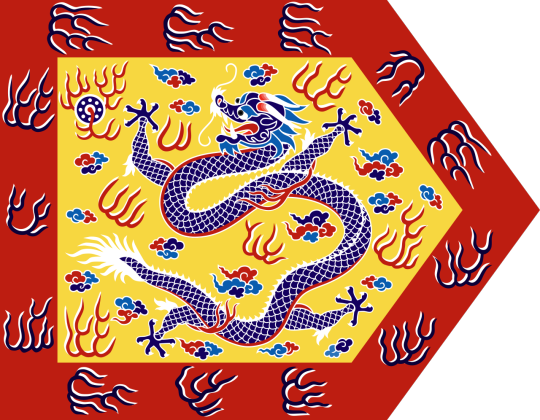
Historical Flag Wars Round 1
The first round of the Historical Flag Wars starts today! Which flag are you rooting for?
Here are the brackets for Round 1:
1. Republic of Rotuma vs. Sultanate of Sulu
2. Peru (May 1822) vs. Kingdom of Amber
3. Green Mountain Boys vs. Taipei, Taiwan (1981-2010)
4. Kingdom of Laos vs. Kingdom of Abemama
5. State of Deseret vs. Guilford Courthouse Flag
6. Mohanpur State vs. Attributed flag of Blackbeard
7. Nepal (1856-1930) vs. Empire of Brazil
8. Burma (1943-1945) vs. Latvian Soviet Socialist Republic
9. Wiphala of Tupac Katari vs. Mamluk Sultunate (attributed)
10. Islands of Refreshment vs. Imperial State of Iran
11. Union Mark of Norway and Sweden vs. Kingdom of Prussia (1892-1918)
12. Jewish Combat Organization vs. Kingdom of Kandy
13. Kingdom of Manipur (1891–1907) vs. International Revolutionary People's Guerrilla Forces
14. Venice (1922-1977, de facto) vs. International Brigades
15. Sultanate of Zanzibar (1963–1964) vs. State of Muskogee
16. Maine (1901-1909) vs. Taymyr Autonomous Okrug
17. Tibet vs. Dutchy of Brittany
18. Ryukyu Kingdom vs. Byelorussian Soviet Socialist Republic
19. Duchy of Milan vs. Republic of Yucatán
20. People’s Republic of Korea vs. Halliste Parish, Estonia
21. Jeju Province (1969–2009) vs. Republic of China (1912–1928)
22. House flag of Nedlloyd vs. Historical Mapuche Flag
23. Kingdom of Ireland vs. Starry Plough Flag
24. Royal standard of the Joseon Dynasty vs. Flag of David IV the Builder
25. Army of the Three Guarantees vs. Raven Banner
26. Iraq (1959–1963) vs. Republic of Formosa
27. Principality of Moldavia vs. Eureka Flag
28. Kingdom of Sikkim vs. Republic of Anguilla
29. Republic of the Rif vs. West Indies Federation
30. Bedford Flag vs. Ethiopian Empire
31. Rägavere Parish, Estonia vs. Unidentified Flag of the Kingdom of Benin
32. Comecon vs. Naval flag of the Duchy of Courland
30 notes
·
View notes
Text

Philip de László - Portrait of Portrait of Sir Alfred East - 1907
Philip Alexius László de Lombos MVO RBA (born Fülöp Laub; Hungarian: Fülöp Elek László; 30 April 1869 – 22 November 1937), known professionally as Philip de László, was an Anglo-Hungarian painter known particularly for his portraits of royal and aristocratic personages. In 1900, he married the Anglo-Irish socialite Lucy Guinness, and he became a British subject in 1914. László's patrons awarded him numerous honours and medals. He was invested with the Royal Victorian Order by Edward VII in 1909 and, in 1912, he was ennobled by Franz Joseph I of Austria; becoming a part of the Hungarian nobility.
Sir Alfred Edward East RA RBA (15 December 1844 – 28 September 1913) was an English painter.
Alfred East was born in Kettering in Northamptonshire and studied at the Glasgow School of Art. His romantic landscapes show the influence of the Barbizon school. His The Art of Landscape Painting in Oil Colour was published in 1906. In April 1888 he had shared an exhibition at the galleries of the Fine Art Society with T.C. Gotch and W. Ayerst Ingram, and was commissioned the following year by Marcus Huish, managing director of the Society, to spend six months in Japan to paint the landscape and the people of the country. When the exhibition of 104 paintings from this tour was held at the Fine Art Society in 1890 it was a spectacular success.
East visited Spain after 1892 when he visited Algeciras at the southern end of Iberia.
In 1906 he was elected president of the Royal Society of British Artists, a position he held until his death. In that year, he published his 107-page illustrated "The Art of Landscape Painting in Oil Colour"; in its preface, he made the observation: "The greatest errors in landscape painting are to be found – contradictory as it may appear – not so much in the matter of technique as in the painter's attitude toward Nature". In this book he described his techniques using colours, half-tones and pencil sketches.
He was awarded a Knighthood in 1910 by King Edward VII. His portrait was painted by Philip de Laszlo. The Alfred East Art Gallery in Kettering, designed by John Alfred Gotch opened on 31 July 1913. The Alfred East Gallery is Northamptonshire's oldest purpose-built art gallery.
East was elected an Associate of the Royal Academy in 1899, having been a regular exhibitor since 1883 and elected to full membership in 1913.
On 28 September 1913, Alfred East died at his London residence in Belsize Park. His body was taken back to Kettering and lay in state in the Art Gallery, where it was surrounded by the pictures he had presented to the town, and attracted crowds of several thousands.
28 notes
·
View notes
Text
Today the Church remembers the 108 Blessed Polish Martyrs.
Orate pro nobis.
The 108 Blessed Polish Martyrs were Roman Catholic Christians in Poland killed during World War II by the Nazis, either in the concentration camps or by mass slaughter on the streets. The group comprises 3 bishops, 79 priests, 7 male religious, 8 female religious, and 11 lay people. There are two parishes named for the 108 Martyrs of World War II in Powiercie in Koło County, and in Malbork, Poland.
The 108 Blessed Martyrs were beatified on 13 June 1999 by Pope John Paul II in Warsaw, Poland.
List of Martyrs
Bishops
1. Antoni Julian Nowowiejski (1858–1941 KL Soldau), bishop
2. Leon Wetmański (1886–1941 KL Soldau), bishop
3. Władysław Goral (1898–1945 KL Sachsenhausen), bishop
Priests
1. Adam Bargielski, priest from Myszyniec (1903–1942 KZ Dachau)
2. Aleksy Sobaszek, priest (1895–1942 KL Dachau)
3. Alfons Maria Mazurek, Carmelite friar, prior, priest (1891–1944, shot by the Gestapo)
4. Alojzy Liguda, Society of the Divine Word, priest (1898–1942 KL Dachau)
5. Anastazy Jakub Pankiewicz, Franciscan friar, priest (1882–1942 KL Dachau)
6. Anicet Kopliński, Capuchin friar, priest in Warsaw (1875–1941)
7. Antoni Beszta-Borowski, priest, dean of Bielsk Podlaski (1880–1943, shot near Bielsk Podlaski)
8. Antoni Leszczewicz, Marian Father, priest (1890–1943, burnt to death in Rosica, Belarus)
9. Antoni Rewera, priest, dean of the Cathedral Chapter in Sandomierz (1869–1942 KL Dachau)
10. Antoni Świadek, priest from Bydgoszcz (1909–1945 KL Dachau)
11. Antoni Zawistowski, priest (1882–1942 KL Dachau)
12. Bolesław Strzelecki, priest (1896–1941 KL Auschwitz)
13. Bronisław Komorowski, priest (1889–22 March 1940 KL Stutthof)
14. Dominik Jędrzejewski, priest (1886–1942 KL Dachau)
15. Edward Detkens, priest (1885–1942 KL Dachau)
16. Edward Grzymała, priest (1906–1942 KL Dachau)
17. Emil Szramek, priest (1887–1942 KL Dachau)
18. Fidelis Chojnacki, Capuchin friar, priest (1906–1942, KL Dachau)
19. Florian Stępniak, Capuchin friar, priest (1912–1942 KL Dachau)
20. Franciszek Dachtera, priest (1910–23 August 1942 KL Dachau)
21. Franciszek Drzewiecki, Orionine Father, priest (1908–1942 KL Dachau); from Zduny, he was condemned to heavy work in the plantation of Dachau. While he was bending over tilling the soil, he adored the consecrated hosts kept in a small box in front of him. While he was going to the gas chamber, he encouraged his companions, saying "We offer our life for God, for the Church and for our Country".
22. Franciszek Rogaczewski, priest from Gdańsk (1892–1940, shot in Stutthof or in Piaśnica, Pomerania)
23. Franciszek Rosłaniec, priest (1889–1942 KL Dachau)
24. Henryk Hlebowicz, priest (1904–1941, shot at Borisov in Belarus)
25. Henryk Kaczorowski, priest from Włocławek (1888–1942)
26. Henryk Krzysztofik, religious priest (1908–1942 KL Dachau)
27. Hilary Paweł Januszewski, religious priest (1907–1945 KL Dachau)
28. Jan Antonin Bajewski, Conventual Franciscan friar, priest (1915–1941 KL Auschwitz); of Niepokalanow. These were the closest collaborators of St Maximilian Kolbe in the fight for God's cause and together suffered and helped each other spiritually in their offering their lives at Auschwitz
29. Jan Franciszek Czartoryski, Dominican friar, priest (1897–1944)
30. Jan Nepomucen Chrzan, priest (1885–1942 KL Dachau)
31. Jerzy Kaszyra, Marian Father, priest (1910–1943, burnt to death in Rosica, Belarus)
32. Józef Achilles Puchała, Franciscan friar, priest (1911–1943, killed near Iwieniec, Belarus)
33. Józef Cebula, Missionary Oblate, priest (23 March 1902 – 9 May 1941 KL Mauthausen)[
34. Józef Czempiel, priest (1883–1942 KL Mauthausen)
35. Józef Innocenty Guz, Franciscan friar, priest (1890–1940 KL Sachsenhausen)
36. Józef Jankowski, Pallotine, priest (1910 born in Czyczkowy near Brusy, Kashubia (died 16 October 1941 in KL Auschwitz beaten by a kapo)
37. Józef Kowalski, Salesian, priest (1911–1942) , priest beaten to death on 3 July 1942 in the KL Auschwitz concentration camp
38. Józef Kurzawa, priest (1910–1940)
39. Józef Kut, priest (1905–1942 KL Dachau)
40. Józef Pawłowski, priest (1890–9 January 1942 KL Dachau)
41. Józef Stanek, Pallottine, priest (1916–23 September 1944, murdered in Warsaw)
42. Józef Straszewski, priest (1885–1942 KL Dachau)
43. Karol Herman Stępień, Franciscan friar, priest (1910–1943, killed near Iwieniec, Belarus)
44. Kazimierz Gostyński, priest (1884–1942 KL Dachau)
45. Kazimierz Grelewski, priest (1907–1942 KL Dachau)
46. Kazimierz Sykulski, priest (1882–1942 KL Auschwitz)
47. Krystyn Gondek, Franciscan friar, priest (1909–1942 KL Dachau)
48. Leon Nowakowski, priest (1913–1939)
49. Ludwik Mzyk, Society of the Divine Word, priest (1905–1940)
50. Ludwik Pius Bartosik, Conventual Franciscan friar, priest (1909–1941 KL Auschwitz); of Niepokalanow. These were the closest collaborators of St Maximilian Kolbe in the fight for God's cause and together suffered and helped each other spiritually in their offering their lives at Auschwitz
51. Ludwik Roch Gietyngier, priest from Częstochowa (1904–1941 KL Dachau)
52. Maksymilian Binkiewicz, priest (1913–24 July 1942, beaten, died in KL Dachau)
53. Marian Gorecki, priest (1903–22 March 1940 KL Stutthof)
54. Marian Konopiński, Capuchin friar, priest (1907–1 January 1943 KL Dachau)
55. Marian Skrzypczak, priest (1909–1939 shot in Plonkowo)
56. Michał Oziębłowski, priest (1900–1942 KL Dachau)
57. Michał Piaszczyński, priest (1885–1940 KL Sachsenhausen)
58. Michał Woźniak, priest (1875–1942 KL Dachau)
59. Mieczysław Bohatkiewicz, priest (1904–4 March 1942, shot in Berezwecz)
60. Narcyz Putz, priest (1877–1942 KL Dachau)
61. Narcyz Turchan, priest (1879–1942 KL Dachau)
62. Piotr Edward Dankowski, priest (1908–3 April 1942 KL Auschwitz)
63. Roman Archutowski, priest (1882–1943 KL Majdanek)
64. Roman Sitko, priest (1880–1942 KL Auschwitz)
65. Stanisław Kubista, Society of the Divine Word, priest (1898–1940 KL Sachsenhausen)
66. Stanisław Kubski, priest (1876–1942, prisoner in KL Dachau, killed in Hartheim near Linz)
67. Stanisław Mysakowski, priest (1896–1942 KL Dachau)
68. Stanisław Pyrtek, priest (1913–4 March 1942, shot in Berezwecz)
69. Stefan Grelewski, priest (1899–1941 KL Dachau)
70. Wincenty Matuszewski, priest (1869–1940)
71. Władysław Błądziński, Michaelite, priest (1908–1944, KL Gross-Rosen)
72. Władysław Demski, priest (1884–28 May 1940, KL Sachsenhausen)
73. Władysław Maćkowiak, priest (1910–4 March 1942 shot in Berezwecz)
74. Władysław Mączkowski, priest (1911–20 August 1942 KL Dachau)
75. Władysław Miegoń, priest, commander lieutenant (1892–1942 KL Dachau)
76. Włodzimierz Laskowski, priest (1886–1940 KL Gusen)
77. Wojciech Nierychlewski, religious, priest (1903–1942, KL Auschwitz)
78. Zygmunt Pisarski, priest (1902–1943)
79. Zygmunt Sajna, priest (1897–1940, shot at Palmiry, near Warsaw)
Religious brothers
1. Brunon Zembol, friar (1905–1942 KL Dachau)
2. Grzegorz Bolesław Frąckowiak, Society of the Divine Word friar (1911–1943, guillotined in Dresden)
3. Józef Zapłata, friar (1904–1945 KL Dachau)
4. Marcin Oprządek, friar (1884–1942 KL Dachau)
5. Piotr Bonifacy Żukowski, friar (1913–1942 KL Auschwitz)
6. Stanisław Tymoteusz Trojanowski, friar (1908–1942 KL Auschwitz)
7. Symforian Ducki, friar (1888–1942 KL Auschwitz)
Nuns and religious sisters
1. Alicja Maria Jadwiga Kotowska, sister, based on eye-witness reports comforted and huddled with Jewish children before she and the children were executed (1899–1939, executed at Piaśnica, Pomerania)
2. Ewa Noiszewska, sister (1885–1942, executed at Góra Pietrelewicka near Slonim, Belarus)
3. Julia Rodzińska, Dominican sister (1899–20 February 1945, KL Stutthof); she died having contracted typhoid serving the Jewish women prisoners in a hut for which she had volunteered.
4. Katarzyna Celestyna Faron (1913–1944, KL Auschwitz); (1913–1944), had offered her life for the conversion of an Old Catholic bishop Władysław Faron (no relation). She was arrested by the Gestapo and condemned to Auschwitz camp. She put up heroically with all the abuses of the camp and died on Easter Sunday 1944. The bishop later returned to the Catholic Church).
5. Maria Antonina Kratochwil, SSND nun (1881–1942) died as a result of the torture she endured while imprisoned in Stanisławów.
6. Maria Klemensa Staszewska (1890–1943 KL Auschwitz)
7. Marta Wołowska (1879–1942, executed at Góra Pietrelewicka near Slonim, Belarus)
8. Mieczysława Kowalska, sister (1902–1941, Soldau concentration camp in Działdowo)
Roman Catholic laity
1. Bronisław Kostkowski, alumnus (1915–1942 KL Dachau)
2. Czesław Jóźwiak (1919–1942, guillotined in a prison in Dresden)
3. Edward Kaźmierski (1919–1942, guillotined in a prison in Dresden)
4. Edward Klinik (1919–1942, guillotined in a prison in Dresden)
5. Franciszek Kęsy (1920–1942, guillotined in a prison in Dresden)
6. Franciszek Stryjas (1882–31 July 1944, Kalisz prison)
7. Jarogniew Wojciechowski (1922–1942, guillotined in a prison in Dresden)
8. Marianna Biernacka (1888–13 July 1943), executed instead of her pregnant daughter-in-law Anna, offered her life for her and her unborn grandchild)
9. Natalia Tułasiewicz (1906–31 March 1945, died in KL Ravensbrück)
10. Stanisław Starowieyski (1895–1941 in KL Dachau)
11. Tadeusz Dulny, alumnus (1914–1942 KL Dachau)
Almighty God, by whose grace and power your Holy Martyrs of Poland triumphed over suffering and were faithful even to death: Grant us, who now remember them in thanksgiving, to be so faithful in our witness to you in this world, that we may receive with them the crown of life; through Jesus Christ our Lord, who lives and reigns with you and the Holy Spirit, one God, forever and ever. Amen.
(Fr. Józef Kowalski, priest beaten to death on 3 July 1942 in the KL Auschwitz concentration camp)
(Sr. Alicja Jadwiga Kotowska, a nun killed protecting a group of Jewish children in 1939 in the mass murders in Piaśnica)

#father troy beecham#christianity#jesus#saints#god#salvation#peace#martyrs#faith#christian persecution
39 notes
·
View notes
Text
Kismet Characters & Family Trees Part Five:

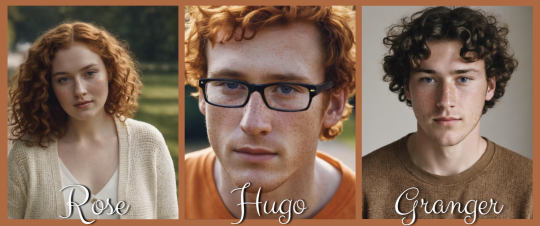
Ron Weasley (1 March 1980) GRYFFINDOR m. Hermione Granger (19 September 1979) GRYFFINDOR (2003):
1. Rose Jean Weasley (31 August 2005) RAVENCLAW m. David Goldstein (18 May 2005) RAVENCLAW (2025):
a) Baxter “Bax” Ronald Goldstein (4 August 2028) GRYFFINDOR
b) Amanda Rose Goldstein (25 April 2031) RAVENCLAW
2. Hugo Harry Weasley (13 July 2007) HUFFLEPUFF m. Kenna Brown (2 April 2009) SLYTHERIN (2042):
a) Catherine Kenna Weasley (17 May 2044) RAVENCLAW
b) Pippa Madelyn Weasley (22 July 2046) HUFFLEPUFF
3. Granger Weasley (1 March 2011) GRYFFINDOR m. Ramona Warrington (21 February 2010) HUFFLEPUFF (2035):
a) Payne Cassius Weasley (13 September 2039) RAVENCLAW
b) Orson Ronald Weasley (25 March 2044) SLYTHERIN
c) Selena Jean Weasley (29 June 2048) HUFFLEPUFF
Émile Clement (1907) m. Marie (1939):
1. Jacques Clement (1944) m. Nell (1967):
a) Elise Clement (1969)
b) Adeline Clement (1973)
2. Luc Clement (1948) m. Louisa (1973):
a) Christian Clement (1975)
b) Chloe Clement (1979)
3. Jean Clement (1952) m. Greg Granger (1975):
a) Hermione Granger (1979) m. Ron Weasley (7 December 2003):
i) Rose Jean Weasley (31 August 2005) RAVENCLAW m. David Goldstein (18 May 2005) RAVENCLAW (2025):
a) Baxter “Bax” Ronald Goldstein (4 August 2028) GRYFFINDOR
b) Amanda Rose Goldstein (25 April 2031) RAVENCLAW
ii) Hugo Harry Weasley (13 July 2007) HUFFLEPUFF m. Kenna Brown (2 April 2009) SLYTHERIN (2042):
a) Catherine Kenna Weasley (17 May 2044) RAVENCLAW
b) Pippa Madelyn Weasley (22 July 2046) HUFFLEPUFF
iii) Granger Ronald Weasley (1 March 2011) GRYFFINDOR m. Ramona Warrington (21 February 2010) HUFFLEPUFF (2035):
a) Payne Cassius Weasley (13 September 2039) RAVENCLAW
b) Orson Ronald Weasley (25 March 2044) SLYTHERIN
c) Selena Jean Weasley (29 June 2048) HUFFLEPUFF
Hugo Granger m. Helen (1939):
1. Garth Granger (1942) (lost his fiancée Annie) never married
2. Greg Granger (1950) m. Jean Clement (1975):
a) Hermione Granger (1979) m. Ron Weasley (7 December 2003):
i) Rose Jean Weasley (31 August 2005) RAVENCLAW m. David Goldstein (18 May 2005) RAVENCLAW (2025):
ai) Baxter “Bax” Ronald Goldstein (4 August 2028) GRYFFINDOR
aii) Amanda Rose Goldstein (25 April 2031) RAVENCLAW
ii) Hugo Harry Weasley (13 July 2007) HUFFLEPUFF m. Kenna Brown (2 April 2009) SLYTHERIN (2042):
ai) Catherine Kenna Weasley (17 May 2044) RAVENCLAW
aii) Pippa Madelyn Weasley (22 July 2046) HUFFLEPUFF
iii) Granger Ronald Weasley (1 March 2011) GRYFFINDOR m. Ramona Warrington (21 February 2010) HUFFLEPUFF (2035):
ai) Payne Cassius Weasley (13 September 2039) RAVENCLAW
aii) Orson Ronald Weasley (25 March 2044) SLYTHERIN
aiii) Selena Jean Weasley (29 June 2048) HUFFLEPUFF
Thanks to @ellieoryan7447 for taking the time and effort to create these.
#harry potter fanfiction#breanie#the world of asc#the kismet trilogy#the kismet trilogy by breanie#characters and family trees
10 notes
·
View notes
Text
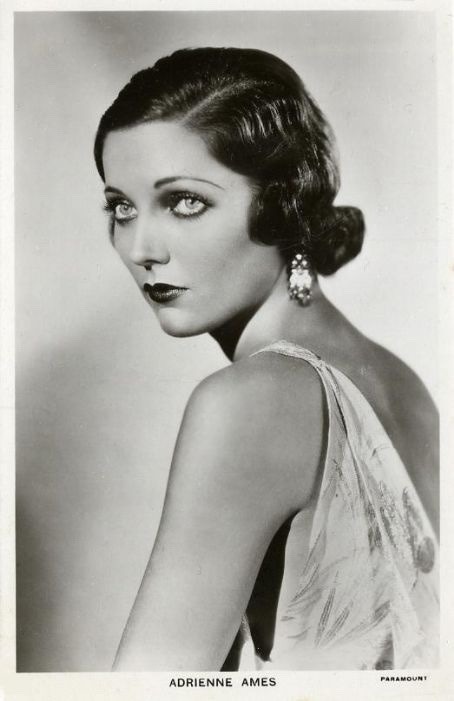
Adrienne Ames (August 3, 1907 – May 31, 1947)
23 notes
·
View notes
Text

The Herero and Namaqua Genocide : Photograph showing German forces gathered in GSWA to join in the conflict against the herero people in 1904.
The Herero and Namaqua Genocide was the massacre of approximately 50,000 – 65,000 Herero and 10,000 Nama between 1904 and 1907 by German military forces in German South West Africa (GSWA) – modern-day Namibia.
Background
Germany formally colonised GSWA in 1884. Prior to colonisation , several distinct native groups lived freely in the area, including the Herero, the Nama, the Damara, the San, and the Ovambo. Under German rule, many of these native groups were used as slave labour and had their land confiscated and their cattle stolen. As a result of this treatment, tensions between the native population and the ruling Germans continued to rise.
Uprising
In January 1904, the Herero population, led by Chief Samuel Maharero, carried out a large armed rebellion against the oppressive German colonial rule. The German ruling forces were unprepared for the attack and approximately 123 German colonial settlers were killed by the Herero. Over the following months, however, the Herero were slowly overwhelmed by the more modern, well-equipped German force under the command of Major Theodor Leutwin. By June 1904, Major Leutwin had cornered the Herero forces at the Waterberg Plateau and was attempting to negotiate their surrender.
The German government in Berlin were frustrated by Leutwin’s slow progress in dissipating the uprising, and in May 1904 appointed Lieutenant General Lothar von Trotha Supreme Commander of GSWA. Trotha arrived in GSWA on 11 June 1904.
Genocide
On 11 August 1904, Trotha abandoned negotiations for a surrender and attempted an aggressive encirclement tactic, surrounding the Herero at the Battle of Waterberg and killing between 3,000 – 5,000 Herero combatants. Yet, despite the brutal tactics of the Germans, most of the Herero managed to escape into the Omaheke desert.
Under Trotha’s command, the Schutztruppe ruthlessly pursued the thousands of Herero men, women and children who were attempting to cross the desert to reach to British Protectorate of Bechuanaland (modern-day Botswana). Thousands of Herero died from being shot to death, drinking water from poisoned wells, or from thirst and starvation in the desert.
On 2 October 1904, Trotha escalated the violence against the Herero in an order: ‘Within the German borders, every male Herero, armed or unarmed […] will be shot to death. I will no longer take in women or children but will drive them back to their people or have them fired at. These are my words to the Herero people. [From] The great general of the mighty German Kaiser’ [Katharina von Hammerstein, ‘The Herero: Witnessing Germany’s “Other Genocide”’, Contemporary French and Francophone Studies 2016, 20:2, 267-286, 276].
In November 1904, the German government in Berlin overturned General Trotha’s inhumane execution order, and instead commanded that the surviving members of the Herero population be incarcerated in concentration camps, such as the Shark Island Concentration Camp . By this point, however, many thousands of Herero had already been murdered.
The remaining Herero who were incarcerated in the concentration camps were subjected to lethal conditions (with a mortality rate of 47-74%), and prisoners endured poor hygiene, little food, forced labour and medical experiments.
In 1905, the Nama people in the south also rose up against the German rule and engaged the colonisers in guerrilla warfare for the following two years. Any Nama that were caught by the Germans were executed or incarcerated in the same concentration camps as the Herero, with extremely high mortality rates.
In total, by the end of the conflict on 31 March 1907, approximately 50,000 – 65,000 Herero and 10,000 Nama had been murdered by the German ruling forces.
#namibia#germany#genocide#black history#world history#history#The Herero and Namaqua Genocide#Herero#artwork#holocaust#Auschwitz#freedom#free gaza#فلسطين#تمبلر#united nations#UNRWA#FUNNY#LOL#ART#artist#tumblr#MEME#HUMOR
5 notes
·
View notes
Text
OC x OC Connections: Dormmates!

Here’s a collection of OCs looking for at least one dormmate! Each dorm has five students in it, so there’s limits on how many openings are available. I’ve included their house, name, birthdate, starting school year, and pronouns. Years are flexible for HPHL & the Victorian era. Please comment, send an ask, or possibly DM with the name of your OC and whose dorm you’re interested in. Preference is for mutuals.

Some quick stats, edited as need be:
22 OCs with at least one open bed
⤷ 21 Hogwarts and 1 Ilvermorny
6 7 dorms have one (1) open bed
4 3 dorms have two (2) open beds
5 6 dorms have three (3) open beds
7 6 dorms have four (4) open beds
8 HPHL & Victorian era dorms with open beds
⤷ Ravenclaw female x2, Hufflepuff female, Hufflepuff male x2, Slytherin male, Gryffindor male, and Gryffindor female
4 WWI & FBWTFT era dorms with open beds
⤷ Hufflepuff female x2, Gryffindor male, and Wampus male
1 HPHM dorm with an open bed
⤷ Ravenclaw male
2 miscellaneous era dorms with open beds
⤷ Hufflepuff male and Slytherin female
2 HPMA dorms with open beds
⤷ Slytherin male and Gryffindor female
5 Next Gen dorms with open beds
⤷ Ravenclaw female, Gryffindor male x2, and Slytherin male x2
6 Gryffindor dorms with at least one open bed
6 Hufflepuff dorms with at least one open bed
4 Ravenclaw dorms with at least one open bed
5 Slytherin dorms with at least one open bed

𝗛𝗣𝗛𝗟 & 𝗩𝗜𝗖𝗧𝗢𝗥𝗜𝗔𝗡 𝗘𝗥𝗔
Battersea, Simon — starts Hogwarts in 1892

house: hufflepuff
date of birth: june 21, 1881
pronouns: he/him
number of open beds: one (1)
other dormmates: henry of alderly (gaygryffindorgal) | fintan hopper (thatravenpuffwitch) | colin moss (usernoneexistent)
Fitzroy, Vincent — starts Hogwarts in 1887

house: slytherin
date of birth: october 4, 1875
pronouns: he/him
number of open beds: three (3)
other dormmates: tiernan o’rourke jr.
Kelly, Niamh — starts Hogwarts in 1886
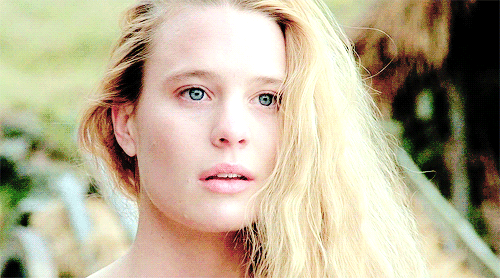
house: ravenclaw
date of birth: february 9, 1875
pronouns: she/her
number of open beds: one (1)
other dormmates: primrose gray (endlessly-cursed) | siobhan llewelyn (kc-and-co) | gwen archeron (thatravenpuffwitch)
Kennedy, Edmund — starts Hogwarts in 1892
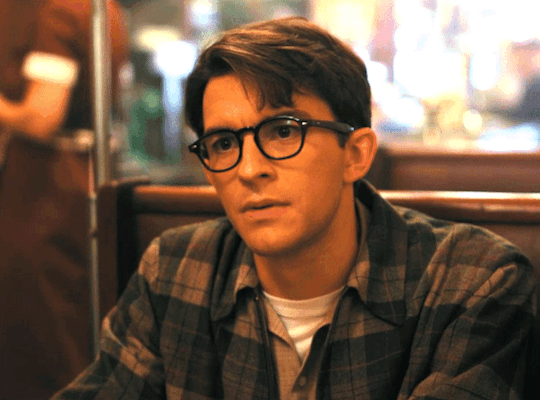
house: gryffindor
date of birth: april 10, 1881
pronouns: he/him
number of open beds: one (1)
other dormmates: adonis demiurgos (endlessly-cursed) | cyrus northrup (ellie-e-marcovitz) | oliver gerard (kc-and-co)
Kennedy, Minerva — starts Hogwarts in 1892

house: ravenclaw
date of birth: april 10, 1881
pronouns: she/her
number of open beds: two (2)
other dormmates: sara rosier (endlessly-cursed) | genevieve davenport (gaygryffindorgal)
O’Rourke, Brianna — starts Hogwarts in 1887

house: hufflepuff
date of birth: march 26, 1876
pronouns: she/her
number of open beds: four (4)
other dormmates: tbd
Parsons, Georgie — starts Hogwarts in 1892
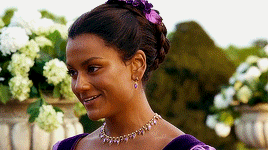
house: gryffindor
date of birth: january 31, 1881
pronouns: she/her
number of open beds: one (1)
other dormmates: seraphina hopper (thatravenpuffwitch) | eleanor parkmoore (ellie-e-marcovitz) | carmine elderberry (potionboy3)
Pembroke, Max — starts Hogwarts in 1892

house: hufflepuff
date of birth: october 31, 1880
pronouns: he/him
number of open beds: one (1)
other dormmates: jim hexley (the-al-chemist) | lysander mercury (slytherindisaster) | jesse seymour (endlessly-cursed)

𝗪𝗪𝟭 & 𝗙𝗕𝗔𝗪𝗧𝗙𝗧 𝗘𝗥𝗔
Lovell, Ophelia — starts Hogwarts in 1904

house: hufflepuff
date of birth: november 3, 1892
pronouns: she/her
number of open beds: four (4)
other dormmates: tbd
Lynch, Aisling — starts Hogwarts in 1918

house: hufflepuff
date of birth: april 22, 1907
pronouns: she/her
number of open beds: two (2)
other dormmates: willa stagg (kc-and-co) | jocelyn somerset (endlessly-cursed)
O’Neill, Rory & O’Shea, Colm — start Hogwarts in 1905
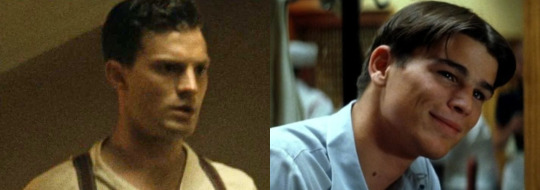
house: gryffindor
date of birth: may 8, 1894 (rory) & august 27, 1894 (colm)
pronouns: he/him
number of open beds: three (3)
other dormmates: tbd
Sullivan, Linus — starts Ilvermorny in 1905

house: wampus
date of birth: november 26, 1893
pronouns: he/him
number of open beds: four (4)
other dormmates: tbd

𝗛𝗣𝗛𝗠
O’Donnell, Conor — starts Hogwarts in 1984

house: ravenclaw
date of birth: august 18, 1973
pronouns: he/him
number of open beds: one (1)
other dormmates: talbott winger | andre egwu | victor ketsuki

𝗠𝗜𝗦𝗖𝗘𝗟𝗟𝗔𝗘𝗡𝗢𝗨𝗦 𝗘𝗥𝗔𝗦
Valdez, Camila — starts Hogwarts in 1991

house: slytherin
date of birth: september 19, 1979
pronouns: she/her
number of open beds: four (4)
other dormmates: tbd
Wraxall, Nicholas — starts Hogwarts in 2000

house: hufflepuff
date of birth: february 2, 1989
pronouns: he/him
number of open beds: three (3)
other dormmates: harker hartford (potionboy3)

𝗛𝗣𝗠𝗔
Whitten, Jack — starts Hogwarts in 2008

house: slytherin
date of birth: february 28, 1997
pronouns: he/him
number of open beds: one (1)
other dormmates: maxim raeburn (potionboy3) | isander yaxley (gaygryffindorgal) | levi vecellio (nicos-oc-hell)
Whitten, Thea — starts Hogwarts in 2008

house: gryffindor
date of birth: may 29, 1997
pronouns: she/her
number of open beds: two (2)
other dormmates: mary ann von dynne (endlessly-cursed) | hester gleason-kearney (cursebreakerfarrier)

𝗡𝗘𝗫𝗧 𝗚𝗘𝗡𝗘𝗥𝗔𝗧𝗜𝗢𝗡
Battersea, Luke — starts Hogwarts in 2011

house: gryffindor
date of birth: july 21, 2000
pronouns: he/him
number of open beds: three (3)
other dormmates: joaquin valdez
Cozens, Jude — starts Hogwarts in 2016
(no fc yet, still looking for the one that fully clicks)
house: gryffindor
date of birth: june 13, 2005
pronouns: he/him
number of open beds: three (3)
other dormmates: scott morris (potionboy3)
O’Donnell-Lee, Declan — starts Hogwarts in 2012?

house: slytherin
date of birth: september 1, 2001 (2004 instead maybe?)
pronouns: he/him
number of open beds: four (4)
other dormmates: tbd
Pembroke, Sophie — starts Hogwarts in 2011
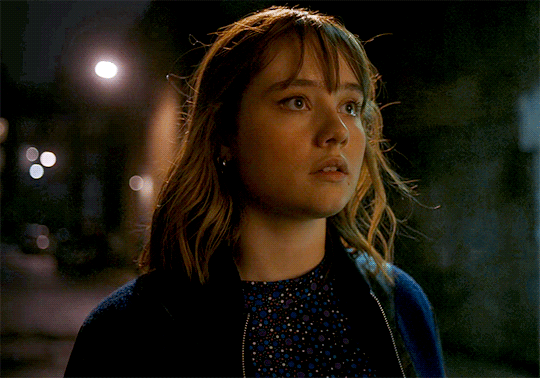
house: ravenclaw
date of birth: january 7, 2000
pronouns: she/her
number of open beds: three (3)
other dormmates: victoire weasley
Power, Quinn — starts Hogwarts in 2016?

house: slytherin
date of birth: december 1, 2004 (2001? 2002? instead maybe)
pronouns: he/him
number of open beds: four (4)
other dormmates: tbd

tag list of a few mutuals with no pressure: @potionboy3 (as you mentioned maybe jude & scott since he’s officially born in 2005 now?) @gaygryffindorgal @endlessly-cursed @legilimenace @cursedvaultss @cursed-herbalist @drinkyoursoupbitch @slytherindisaster
#will delete later… so commenting is preferred#will probably make some new ones later cause might have more ocs
2 notes
·
View notes
Text
irl bsd authors
i haven't found a list of irl bsd authors listed from oldest to most recent so i decided to do that. multiple lists for date of birth, death, and publication of the work their ability is based on (if applicable) + fun stuff at the end
birth dates (oldest to most recent)
alexander pushkin - 6 Jun 1799
nathaniel hawthorne - 4 Jul 1804
edgar allan poe - 19 Jan 1809
nikolai gogol - 1 Apr 1809
ivan gonchorav - 18 Jun 1812
herman melville - 1 Aug 1819
fyodor dostoevsky - 11 Nov 1821
jules verne - 8 Feb 1828
saigiku jōno - 24 Sep 1832
louisa may alcott - 29 Nov 1832
yukichi fukuzawa - 10 Jan 1835
mark twain - 30 Nov 1835
ōchi fukuchi - 13 May 1841
paul verlaine - 30 Mar 1844
bram stoker - 8 Nov 1847
tetchō suehiro - 15 Mar 1849
arthur rimbaud - 20 Oct 1854
ryūrō hirotsu - 15 Jul 1861
ōgai mori - 17 Feb 1862
h. g. wells - 21 Sep 1866
natsume sōseki - 9 Feb 1867
kōyō ozaki - 10 Jan 1868
andré gide - 22 Nov 1869
doppo kunikida - 30 Aug 1871
katai tayama - 22 Jan 1872
ichiyō higuchi - 2 May 1872
kyōka izumi - 4 Nov 1873
lucy maud montgomery - 30 Nov 1874
akiko yosano - 7 Dec 1878
santōka taneda - 3 Dec 1882
teruko ōkura - 12 Apr 1886
jun'ichirō tanizaki - 24 Jul 1886
yumeno kyūsaku - 4 Jan 1889
h. p. lovecraft - 20 Aug 1890
agatha christie - 15 Sep 1890
ryūnosuke akutagawa - 1 Mar 1892
ranpo edogawa - 21 Oct 1894
kenji miyazawa - 27 Aug 1896
f. scott fitzgerald - 24 Sep 1896
margaret mitchell - 8 Nov 1900
motojirō kajii - 17 Feb 1901
mushitarō oguri - 14 Mar 1901
john steinbeck - 27 Feb 1902
aya kōda - 1 Sep 1904
ango sakaguchi - 20 Oct 1906
chūya nakahara - 29 Apr 1907
atsushi nakajima - 5 May 1909
osamu dazai - 19 Jun 1909
sakunosuke oda - 26 Oct 1913
michizō tachihara - 30 Jul 1914
tatsuhiko shibusawa - 8 May 1928
(ace) alan bennett - 9 May 1934
yukito ayatsuji - 23 Dec 1960
mizuki tsujimura - 29 Feb 1980
death dates (oldest to most recent)
alexander pushkin - 10 Feb 1837
edgar allan poe - 7 Oct 1849
nikolai gogol - 4 Mar 1852
nathaniel hawthorne - 19 May 1864
fyodor dostoevsky - 9 Feb 1881
louisa may alcott - 6 Mar 1888
ivan goncharov - 27 Sep 1891
herman melville - 28 Sep 1891
arthur rimbaud - 10 Nov 1891
paul verlaine - 8 Jan 1896
tetchō suehiro - 5 Feb 1896
ichiyō higuchi - 23 Nov 1896
yukichi fukuzawa - 3 Feb 1901
saigiku jōno - 24 Jan 1904
jules verne - 24 Mar 1905
kōyō ozaki - 30 Oct 1903
ōchi fukuchi - 4 Jan 1906
doppo kunikida - 23 Jun 1908
mark twain - 21 Apr 1910
bram stoker - 20 Apr 1912
natsume sōseki - 9 Dec 1916
ōgai mori - 8 Jul 1922
ryūrō hirotsu - 25 Oct 1928
ryūnosuke akutagawa - 24 Jul 1927
katai tayama - 13 May 1930
motojirō kajii - 24 Mar 1932
kenji miyazawa - 21 Sep 1933
yumeno kyūsaku - 11 Mar 1936
h. p. lovecraft - 15 Mar 1937
chūya nakahara - 22 Oct 1937
michizō tachihara - 29 Mar 1939
kyōka izumi - 7 Sep 1939
santōka taneda - 11 Oct 1940
f. scott fitzgerald - 21 Dec 1940
lucy maud montgomery - 24 Apr 1942
mushitarō oguri - 10 Feb 1946
h. g. wells - 13 Aug 1946
akiko yosano - 29 May 1942
atsushi nakajima - 4 Dec 1942
sakunosuke oda - 10 Jan 1947
osamu dazai - 13 Jun 1948
margaret mitchell - 16 Aug 1949
andré gide - 19 Feb 1951
ango sakaguchi - 17 Feb 1955
teruko ōkura - 18 Jul 1960
ranpo edogawa - 28 Jul 1965
jun'ichirō tanizaki - 30 Jul 1965
john steinbeck - 20 Dec 1968
agatha christie - 12 Jan 1976
tatsuhiko shibusawa - 5 Aug 1987
aya kōda - 31 Oct 1990
(ace) allan bennett - still alive
yukito ayatsuji - still alive
mizuki tsujimura - still alive
work (oldest to most recent)
alexander pushkin - A Feast in Time of Plague, 1830
edgar allan poe - The Murders in Rue Morgue, 1841
nikolai gogol - The Overcoat, 1842
edgar allan poe - The Black Cat, 19 Aug 1843
nathaniel hawthorne - The Scarlet Letter, 1850
herman melville - Moby-Dick, 1851
louisa may alcott - Little Women, 1858
fyodor dostoevsky - Crime and Punishment, 1866
ivan goncharov - The Precipice, 1869
yukichi fukuzawa - An Encouragement of Learning, 1872-76
jules verne - The Mysterious Island, 1875
mark twain - The Adventures of Tom Sawyer, 1876
mark twain - Adventures of Huckleberry Finn, 1884
tetchō suehiro - Plum Blossoms in the Snow, 1886
arthur rimbaud - Illuminations, 1886
saigiku jōno - Priceless Tears, 1889
ōchi fukuchi - The Mirror Lion, A Spring Diversion, Mar 1893
ryūrō hirotsu - Falling Camellia, 1894
h. g. wells - The Time Machine, 1895
kōyō ozaki - The Golden Demon, 1897
bram stoker - Dracula, 1897 (his ability has not been named, but c’mon, vampires)
akiko yosano - Thou Shall Not Die, 1903
natsume sōseki - I Am a Cat, 1905-06
katai tayama - Futon, 1907
lucy maud montgomery - Anne of Green Gables, 1908
ōgai mori - Vita Sexualis, 1909
andré gide - Strait is the Gate, 1909
kyōka izumi - Demon Pond, 1913
ryūnosuke akutagawa - Rashomon, 1915
motojirō kajii - Lemon, 1924
f. scott fitzgerald - The Great Gatsby, 1925
kenji miyazawa - Be not Defeated by the Rain, 3 Nov 1931
santōka taneda - Self-Derision, 8 Jan 1932
mushitarō oguri - Perfect Crime, 1933
chūya nakahara - This Tainted Sorrow, 1934
yumeno kyūsaku - Dogra Magra, 1935
margaret mitchell - Gone With the Wind, 1936
john steinbeck - The Grapes of Wrath, 1939
agatha christie - And Then There Were None, 6 Nov 1939
atsushi nakajima - The Moon Over the Mountain, Feb 1942
jun'ichirō tanizaki - The Makioka Sisters, 1943-48
ango sakaguchi - Discourse on Decadence, 1946
teruko ōkura - Gasp of the Soul, 1947
osamu dazai - No Longer Human, 1948
(ace) alan bennett - The Madness of King George III, 1995
yukito ayatsuji - Another, 2005
mizuki tsujimura - Yesterday’s Shadow Tag, 2015
can’t find dates:
michizō tachihara - Midwinter Memento
sakunosuke oda - Flawless
n/a: doppo kunikida, ranpo edogawa, ichiyō higuchi, h. p. lovecraft “Great Old Ones” (fictional ancient dieties eg. cthulhu), aya koda, paul verlaine, tatsuhiko shibusawa “Draconia” (umbrella term for shibusawa’s works/style)
bonus:
elise - The Dancing Girl (1890) by ōgai mori
shōsaku katsura - An Uncommon Common Man by doppo kunikida
Nobuko Sasaki (20 Jul 1878 - 22 Sep 1949) - doppo kunikida’s first wife
gin akutagawa - O-gin (1922) by ryūnosuke akutagawa
naomi tanizaki + kirako haruno - Naomi (1925) by jun'ichirō tanizaki
t. j. eckelburg + tom buchanan - The Great Gatsby (1925) by f. scott fitzgerald
the black lizard - Back Lizard (1895) by ryūrō hirotsu (+ The Black Lizard (1934) by ranpo edogawa)
some fun facts:
the oldest: aya koda 86, andré gide 81, h. g. wells 79, jun'ichirō tanizaki 79, ivan goncharov 79 (alan bennett is 89 but still alive)
the youngest: ichiyō higuchi 24, michizō tachihara 24, chūya nakahara 30
yukito ayatsuji’s Another is also an anime, released in 2012
both edgar allan poe and mark twain’s ability consist of two of the author’s work
12 notes
·
View notes
Text
Birthdays (bc I can)
I put my own fancasts and my headcannon b-day'
Euphemia Braithewaite-Potter - January 4, 1907
Walburga Irma-Black - April 17, 1907
Fleamont Potter - May 15, 1909
Charlus Potter (Monty' brother) - August 19, 1900
Lucretia Black (Orion' sister) - August 3, 1914
Orion Black - September 30, 1920
Druella Rosier (Axel' sister) - December 31, 1928
Axel Rosier (Rosier twins dad) - November 14, 1930
Cygnus Black (Black sisters dad) - July 30, 1938
Adele Jacob-Rosier (Rosier twins mom) - June 7, 1938
Alphard Black - June 26, 1925
Rodolphus Lestrange - October 19, 1952
Rabastan Lestrange- September 21, 1954
Lucius Malfoy - July 1, 1954
Enid Pettigrew (Peter' sister) - January 30, 1962
Mason McKinnon (Marlene' brother) - December 20, 1952
Mitchell McKinnon (Marlene' brother) - June 25, 1955
Matthew McKinnon (Marlene' brother) - November 7, 1958
Maxwell McKinnon (Marlene' brother) - February 29, 1962
Petunia Evans-Dursley - January 10, 1958
Mavan Rosier (Rosier twins brother) - March 14, 1965
Annabella Rosier (Rosier twins sister) - April 16, 1968
Elizabeth Meadows (Dorcas' sister) - May 1, 1965
Fabian Prewett - September 30, 1958
Gideon Prewett - September 30, 1958
Molly Prewett-Weasley - October 30, 1949
Billius Weasley (Arthur' brother) - May 26, 1952
Arthur Weasley - February 6, 1950
James Potter - March 27, 1960
Remus Lupin - March 10, 1960
Sirius Black - November 3, 1960
Peter Pettigrew - August 31, 1960
Lily Evans-Potter - January 30, 1960
Mary Macdonald - September 16, 1959
Marlene McKinnon - August 1, 1960
Dorcas Meadows - April 2, 1960
Bartemius Crouch Jr. - July 9, 1961
Evan Rosier - June 20, 1961
Pandora Rosier - June 20, 1961
Regulus Black - December 31, 1961
Alice Fortescue-Longbottom - August 14, 1960
Frank Longbottom - September 14, 1959
Ted Tonks - March 20, 1953
Emmeline Vance - July 18, 1957
Rita Skeeter - December 19, 1951
Ophelia Zabini - January 15, 1951
Emma Vanity - February 28, 1960
Andromeda Black - October 10, 1953
Narcissa Black - July 19, 1955
Bellatrix Black - May 2, 1991
Tom Riddle Jr. - February 19, 1979
Mattheo Riddle - January 20, 1980
Aliana Riddle - January 20, 1980
Mandy Lestrange - March 13, 1985
Cara Lestrange - May 23, 1986
Delphini Riddle - August 16, 1987
Lorenzo Berkshire - December 17, 1996
Nymphadora Tonks - October 8, 1973
Nina Tonks (Nymphadora' sister) - June 13, 1978
Lucas Rosier (Rosekiller child) - July 21, 1985
Nicholas Rosier (Rosekiller child) - July 1, 1987
Draco Malfoy - June 5, 1980
Lila Malfoy (Draco' sister) - June 5, 1980
Artemis McKinnon (Dorlene child) - September 13, 1981
Aries McKinnon (Dorlene child) - October 17, 1982
Jack McKinnon (Dorlene child) - January 23, 1987
Harry Potter - July 31, 1980
Lillian Potter (Harry' sister) - July 31, 1980
Rose Potter (Harry' sister) - May 24, 1981
Leo Potter (Harry' brother) - February 16, 1983
Pansy Parkinson - August 1, 1980
Blaise Zabini - November 1, 1980
Teddy Lupin - April 11, 1985
Neville Longbottom - July 30, 1980
Juliana Longbottom (Neville' sister) - October 15, 1986
Nicky Longbottom (Neville' brother) - October 15, 1986
Penelope Vance (Emmary child) - November 12, 1988
Hermione Granger - September 19, 1980
Violet Granger (Hermione' sister) - May 14, 1979
Bill Weasley - November 29, 1970
Charlie Weasley - December 12, 1972
Percy Weasley - August 22, 1976
Fred Weasley - April 1, 1978
George Weasley - April 1, 1978
Ron Weasley - March 1, 1980
Ginevra Weasley - August 11, 1981
Luna Lovegood - February 13, 1981
Eclipse Rosier (Pandalily child or Luna' sister) - January 11, 1985
4 notes
·
View notes
Photo
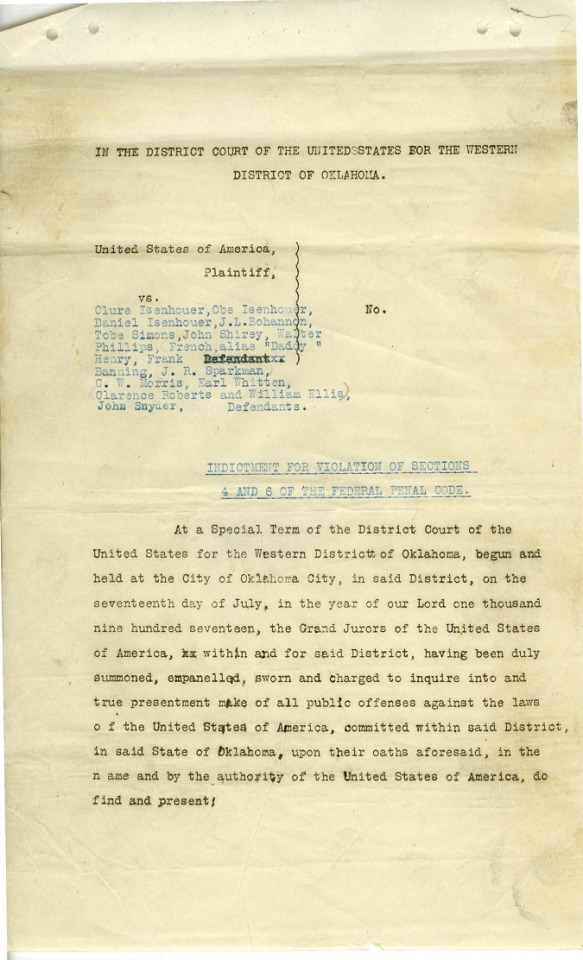

Indictment [p.1, 11], 7/31/1922, of Clure Isenhouer and others for the Green Corn Rebellion, an Oklahoma tenant farmers’ revolt against the WWI Draft.
File Unit: 1553: United States v. Clure Isenhouer, et. al., 1907 - 1981
Series: Criminal Case Files, 1907 - 1981
Record Group 21: Records of District Courts of the United States, 1685 - 2009
Transcription:
IN THE DISTRICT COURT OF THE UNITED STATES FOR THE WESTERN DISTRICT OF OKLAHOMA.
United States of America, Plaintiff
vs.
Clue Isenhouer, Obe Isenhouer, Daniel Isenhouer, J.L. Bohannon, Tobe Simons, John Shirey, Walter Phillips, French, alias "Daddy" Henry, Frank [deleted] Defendant Banning, J. R. Sparkman, C. W. Morris, Earl Whitten, Clarence Roberts and William Ellis), John Snyder, Defendants.
INDICTMENT FOR VIOLATION OF SECTIONS
4 AND 6 OF THE FEDERAL PENAL CODE.
At a Special Term of the District Court of the United States for the Western District of Oklahoma, begun and held at the City of Oklahoma City, in said District, on the seventeen, the Grand Jurors of the United States of America, within and for said District, having been duly summoned, empanelled [sic], sworn and charged to inquire into and true presentment make of all public offenses against the laws of the United States of America, committed within said District, is said State of Oklahoma, upon their oaths aforesaid, in the name and by the authority of the United States of America, do find and present:
[page 2]
of Congress approved May 18, 1917, and the said Proclamation and Regulations of the President of the United States, and [inserted: to] refuse obedience thereto, in that any person subject to military duty and service under the provisions of said Act of Congress approved May 18, 1917, and the said Proclamation and Regulations of the President of the United States, should resist the enforcement of said Act of Congress approved May 18, 1917, and the said Proclamation and Regulations of the President of the United States, and refuse obedience thereto, and that they, the said Clure Isenhouer, Obe Isenhouer, Daniel Isenhouer, J.L. Bohannon, Tobe Simons, John Shirey, [inserted, handwritten: John Snyder], Walter Phillips, (French, (alias "Daddy") Henry), Frank Banning, (J. R. Sparkman,) C. W. Morris, Earl Whitten, (Clarence Roberts and William Ellis) would aid and assist such persons by force of arms and by harboring such persons in so resisting the enforcement of said Act of Congress approved May 18, 1917, and the said Proclamation of the President of the United States and the Regulations prescribed by the President of the United States under the authority of said Act of Congressmen approved May 18, 1917, and in refusing obedience thereto.
And so the Grand Jurors aforesaid, upon their oaths aforesaid, do say that the said Clure Isenhouer, Obe Isenhouer, Daniel Isenhouer, J.L. Bohannon, Tobe Simons, John Shirey, [inserted, handwritten: John Snyder], Walter Phillips, (French, (alias "Daddy") Henry), Frank Banning, (J. R. Sparkman,) C. W. Morris, Earl Whitten, (Clarence Roberts and William Ellis) did, at the time and place and in the manner aforesaid, incite an insurrection against the authority and the laws of the United States, to-wit, the Act of Congress approved May 18, 1917, entitled "An Act to authorize the President to increase temporarily the Military Establishment of the United States", and the Proclamation of the President of the United States and the Regulations prescribed by the President of the United States under authority of the said Act of Congress
-11-
#archivesgov#July 31#1922#1920s#World War I#WWI#the draft#insurrection#Oklahoma#Green Corn Rebellion
35 notes
·
View notes
Text
Miraculous Beatles - Adrian's Family and Partner
Adrian McCartney (Adrien Agreste/Paul McCartney)
Gabe McCartney (Gabriel Agreste)
Birthday - July 7, 1907
Personality - Adrian's callous and selfish father and the owner of a television shop. Gabe never really liked his son, seeing him as being "too much of a pansy" and unfit to run the business. He discouraged his son from trying music, and often insulted the boy about never getting anywhere in life. He only loved his wife, Emily, Adrian's mom. When she died, he did not even bother comforting her child. He also showed racism to Adrian's friends Nino and Kagami and to his girlfriend Mary. Of course, Adrian became vindicated when The Beatles became one of the biggest bands of the world.
Emily McCartney (Emilie Agreste)
Birthday - September 29, 1909
Died - October 31, 1956
Personality - Adrian's mother, and the reason he picked up music. She was an amateur singer who taught him how to play the piano, the bass and to sing. A kind and gentle soul, she kept trying to get her husband to ease up on their child, but to no avail. The only reason she didn't leave Gabe was because he provided for the family, and because she was too sick to leave the house. On Halloween night, she died from breast cancer. Adrian would cherish her even after her passing, promising her that he'd make it in the music world.
Mary Powell-Pang (Marinette Dupain-Cheng)
Birthday - May 9, 1942
Personality - Adrian's girlfriend and best friends with the rest of the boys as well as Kagami, Alya, Jules and Rose. Mary is a Liverpudlian with her dad Timothy being from Liverpool and her mother Xia Bing coming from China. Mary is a jovial dork who loves fashion and music. Her and Kagami have a singing group called Kawami, where Mary is the lighthearted one in the duo. She's known for her beautiful and lively style of singing.
I hope you enjoyed this family! Next up is Nathaniel's. @artzychic27, @msweebyness
#adrien agreste#adrien#gabriel agreste#gabriel#emilie agreste#emilie#marinette dupain cheng#marinette#paul mccartney#the beatles#beatles#beatles au#rock band au#band au#miraculous beatles#music#miraculous ladybug#miraculous
5 notes
·
View notes
Photo





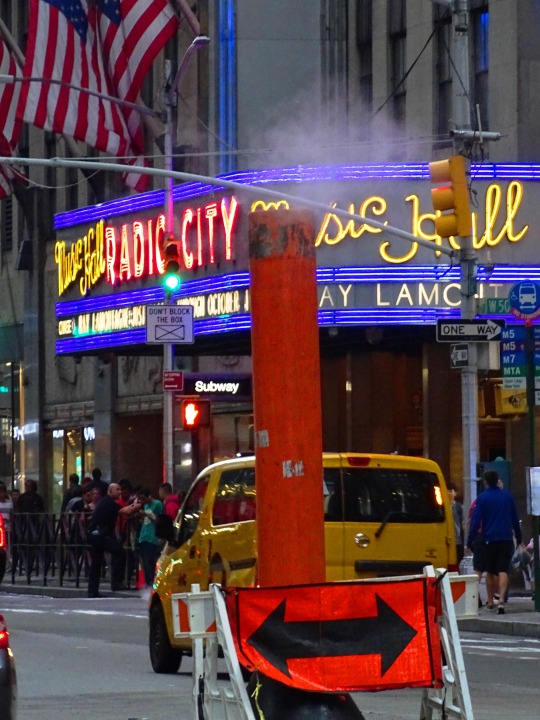




The first cabs of the New York City Taxicab Company, imported from France, began running in the city streets on May 31, 1907.
#I really love the first pic#too touristy#but a good photo op#Times Square#original photography#Flatiron District#Macy's#Herald Square#Manhattan#New York City#summer 2018#2013#original photogrpahy#night shot#travel#tourist attraction#landmark#vacation#cityscape#first cabs#31 May 1907#New York City Taxicab Company#anniversary#us history#car#traffic#street scene
2 notes
·
View notes
Text
Telephotography with the 5x7 RB Cycle Graphic by Thomas Evans
Published in the Graflex Journal, Issue 3, 2022
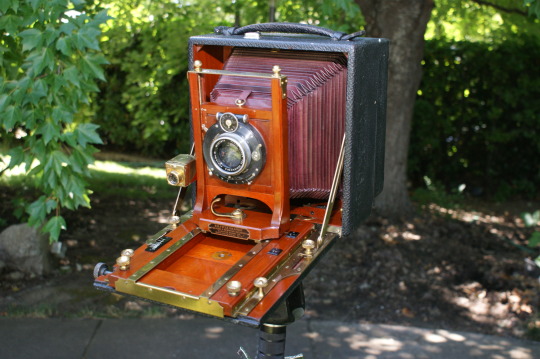
5x7” RB Cycle Graphic, with f6.8, 8 ¼” Goerz Dagor lens.
I recently received a 5x7” RB Cycle Graphic outfit, which included several very interesting lenses, including an f:6.8, 8 ¼ –inch Goerz Dagor, a wide-angle 6 ½ x 8 ½” Bausch & Lomb Zeiss Protar V, with a Supplemental wide-angle bed, and an early Goerz telephotographic tube with a 3 ½-inch Goerz tele-negative lens installed.
The Cycle Graphic was first introduced in 1900, with a reversible back, in five formats from 3 ¼ x 4 ¼” to 8x10”. An accessory focal plane shutter was made available for each format in 1902. The design was made sturdier in 1904, and included front shift and a double-swinging back, and a dropping bed, in both 5x7” and 6 ½ x 8 ½” formats. The Revolving Back Cycle Graphic was introduced in 1907, in four formats from 4x5” to 8x10”, and was made through 1922. The 8x10” model was only available with the reversible back, and it and the 4x5” model were discontinued in 1920. The 6 ½ x 8 ½ RB Cycle Graphic was used as the basic camera in the panoramic Cirkut No. 8 outfit.

5x7 RB Cycle Graphic with B&L Zeiss Protar Series V wide-angle lens and supplementary WA bed.
The Cycle Graphic Supplemental wide-angle bed was introduced in 1912, and, with consideration of the low serial number on the camera, 1912 or 1913 are good, educated guesses for the year of manufacture. This RB Cycle Graphic also came with a revolving back Graflex focal plane shutter, which facilitates the use of barrel lenses, such as the Protar Series V.

5x7” Folmer & Schwing Auto Graflex Focal Plane Shutter attachment for revolving back.
The 1913 Graflex Catalog described the RB Cycle Graphic as being the foremost camera of its type:
“For the technical worker the Revolving Back Cycle Graphic is particularly valuable, as its ridged construction and accurate adjustment make it indispensable for those engaged in scientific research, involving the application of photography. … the rigidity of the Graphic – due to the most careful, accurate and thorough construction ever incorporated in photographic apparatus – is still a Graphic feature which will bear particular emphasis, and is one of the features which has given the Graphic its prestige with scientific and advanced photographic workers.”
“To allow the use of long focus lenses, ample bellows capacity is provided. The front runs out on telescopic framed tracks, reinforced by angle-brass guides with milled head binding screws, which lock the bed rigidly in place. The extension tracks being in the form of frames allow extra large lens space when closed. The construction of these tracks affords a wider base for the lens support and prevents any lateral or oscillating movement, thus rendering the Cycle Graphic particularly adaptable for tele-photo and other extremely accurate work.”
Such description of the Cycle Graphic may well have influenced the photographer who originally purchased this outfit, as they were clearly interested in good optics, and wide-angle and telephoto photography.
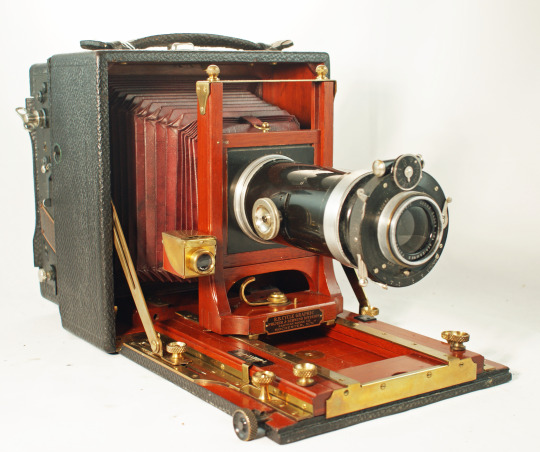
5x7 RB Cycle Graphic with Goerz 8 ¼” Dagor and Goerz Xa Tele-tube and tele-negative lens.
Telephotography
I have read some about the early designs of telephoto lenses, which combined a negative lens of the photographer’s choice at the rear of the ‘tele-tube’, and used the photographer’s preferred ‘ordinary’ taking lens at the front of the tube. This is the first time that I have actually seen one of these, and have been able to experiment with it, so I will be concentrating on this telephoto. This tube came with two adapting rings that screw onto the front of the tube, to receive the positive lens. One of these rings, marked “Compound” fits the Compound shutter of the Dagor lens. The other ring is marked “Barrel” and must have been meant for a barrel lens, perhaps a faster lens, which is no longer present. I tried several barrel lenses in this ring, and found a Kodak Anastigmat #31, 5 ½-inch lens fits, but this focal length seems to be too short to combine effectively with the 3 ½-inch negative lens. The rule-of-thumb appears to have been that the focal length of the negative lens should be about half, or less than half, of the focal length of the positive lens.
The idea of using a negative component at the rear of a tube to magnify the image produced by a positive component in front has long been used in telescopes, and both Galileo Galilei, in 1610, and Johannes Kepler, in 1611, developed refracting or dioptric telescopes based on this principle. In 1834, Peter Barlow designed a diverging rear lens component for telescopes which is still in wide use today. However, it was not until the end of the nineteenth century that this principle was applied to photography.
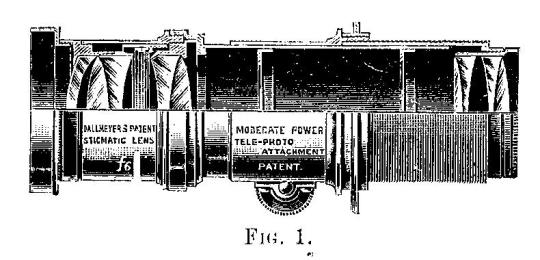
T. R. Dallmeyer Telephoto lens of the 1890s
In 1891, Thomas R. Dallmeyer of England, A. Duboscq of France, and Dr. Miethe of Germany developed telephoto lenses for photography. The designs by Dallmeyer and Miethe were nearly identical, but, communicating through the British Journal of Photography, they could not establish who had primacy, and so no patent was granted. Dallmeyer introduced an improved version, the Simple Telephoto Lens, in 1892, and was granted a patent. By 1896, the design had been improved to include a well-corrected positive lens, and a better-corrected negative lens made up of a pair of doublets. It was recognized early-on that magnifying the image also magnified the positive lens’s optical aberrations. It was eventually recognized that it was very difficult to correct a negative lens for use with a wide range of different positive lenses, and by 1899 Dallmeyer had introduced the Adon Telephoto lens, which had a dedicated set of lenses, so that the aberrations could be fairly well balanced throughout the system. This lens still allowed the separation to be adjusted, and this adjustment away from an optimally corrected position introduced increasing aberrations.
However, the telephoto attachment for an ordinary positive taking lens remained popular among photographers, because of its great versatility. Because the separation between the positive and negative lens could be adjusted, when used on a camera with generous bellows extension, it was possible for the photographer to adjust the lens to provide the image magnification and field of coverage desired. That is, decreasing the separation between the lenses increases the focal length and magnification of the image. This also required increasing the bellows extension to bring the new image into focus. The photographer could also increase the image magnification by swapping-out the negative lens with one of a shorter focal length, thus increasing the ratio between the two lenses, and so increasing the power of the telephoto, also thereby increasing the image scale, but at a shorter bellows extension. The field of coverage can be increased by extending the bellows, and then re-focusing the image by adjusting the separation between the positive and negative lenses.
In theory, if the telephoto lens allows for sufficient adjustment, and the camera allows for sufficient bellows extension, any magnification up to ‘infinity’ can be reached. Small changes in the separation result in large differences in the focal length of the telephoto lens, and larger differences bellows extension. The brightness of the image diminishes by the square of the distance (extension), and so the length of exposure soon becomes inconvenient.
In practice, especially after the introduction of well-corrected anastigmatic lenses during the first decade of the 1900s, some photographers were able to produce successful images with magnifications up to 40 times the size of the image produced by using the ordinary taking lens alone. Telephotographs made of mountain peaks twelve miles away or more could show such details as rocky ridges and snow patches not visible to the naked eye at that distance.
This capacity for magnification also proved useful for studio portraiture, providing images with better perspective, and without the disproportionate size of hands and legs caused by using a normal lens close to the sitter. And the telephoto lens also proved useful for taking close-up, one-to-one or greater macro images of near objects, such as flowers, insects or birds.
The Telephotographic Attachment in Use.
Early authors of telephotography how-to books clearly put a lot of thought into how to use the telephoto lens. Here are some of their helpful hints.
It is important to use a long lens hood in order to reduce internal reflections in the lens, and thus reduce flare and fogging, which can veil the image in a dull gray. This was a major source of disappointment in the early years.
When the separation between the positive and negative lenses is equal to the focal length of the positive lens, then the image produced is the same size as that produced by the positive lens alone. As the separation is decreased, the magnification is increased, in theory to infinity. The minimum ‘useful’ separation is found by subtracting the focal length of the negative from the focal length of the positive. That is, for a telephoto system made up of an 8 ¼ inch positive and 3 ½ inch negative, 4 ¾ inches is the minimum separation at which, in theory, an image can be formed. In reality, dealing with very large magnifications is impractical, due to the rapid loss of the intensity of the light.
The magnification of a set-up can be calculated by dividing the camera bellows extension by the focal length of the negative lens, and adding 1. Some early authors measured the bellows extension from the ground glass to the face of the lens mounting flange, while others measured from GG to the rear surface of the negative lens, so this is at best an estimation.
When the separation between the positive and negative lens has been adjusted to produce the desired magnification, the equivalent focal length of the telephoto system can be found by multiplying the focal length of the positive lens by the magnification.
To find the effective aperture of a telephoto system, multiply the aperture (f stop) set on the positive lens by the magnification. That is, if the positive lens is set to f/11, and one is working at a magnification of 4 diameters, the effective aperture of the telephoto system is f/44.
The above recommendation about exposure can be compared to the recommendation that the telephotographic exposure can be calculated by multiplying the exposure that would be given with the positive lens alone by the square of the magnification. That is, if the positive-lens exposure called for is 1 second at f/11, and the telephoto is set to produce 4 diameters of magnification, the photographer would square the magnification of 4 (4x4 = 16) and multiply the exposure by the product: 16 x 1 second = 16 seconds. An exposure of 1 second at f/11 is a very close equivalent to 16 seconds at f/45.
The authors writing during the early part of the 20th century were using plates and films that were overly sensitive to ultra violet and blue light, and so, when using a telephoto lens on a hazy day, they cautioned against overexposure due to the inherent luminosity of the atmosphere. Yellow filters were recommended, such as the Wratten K2, K3 and G filters.
Whether a specific telephoto lens set-up will cover your film depends on the focal lengths of the positive and negative lenses, the aperture of the positive lens (because the positive lens diaphragm is in front, stopping down can cause vignetting), the magnification, and the clear diameter of the negative lens. The circle of illumination is smaller at lower magnifications, and quickly increases as the magnification increases. Generally speaking, to cover a 4x5-inch film with a magnification of 3 diameters, a negative lens of 3-inches focal length would be needed, and at 4 or 5 magnifications, a negative of 2 ½-inches should work. To cover 5x7-inch format at a magnification of 3 diameters, a negative lens of 3 ½” inches would be needed.
Conclusion
One can see how the ambitious photographers of the 1890s and 1910s would have been intrigued by the idea that they could use their cameras to reach out into the distance, and bring in fine detail not otherwise available to the eye. And one can see how the actual results might not have measured up to the expectations. The surprising versatility of a lens that could be configured to provide a lens of the local length and magnification desired, without excessive bellows extension or the large mass of a non-telephoto long lens, is attractive. The calculations needed, the careful measurements, the rigorous set-up on a stout tripod, the issues with haze, flare, and camera vibrations during long exposures, and so forth, no doubt led to many disappointments. Before the relatively well-corrected anastigmat lenses, such as the Goerz Dagor, were commonly available, the lenses used were likely to be the fairly fast Rapid Rectilinear and a Petzval type portrait lens, and the negative lenses would magnify their uncorrected aberrations as well as their images. As lens correction improved, and as the telephoto lens was simplified to the fixed-focal-length type, telephotography may have become less intriguing, but it has certainly become easier, and more widely appreciated.
References.
Dallmeyer, Thomas. R. 1899. Telephotography, an Elementary Treatise on the Construction and Application of the Telephotographic Lens. William Heinemann, London. Reprinted by Scholar Select.
Early Photography, Telephotography http://www.earlyphotography.co.uk/site/entry_L72.html
Kinglake, Rudolph. 1951. Lenses in Photography, The Practical Guide to Optics for Photographers. Case-Hoyt Corporation, for Garden City Books, Garden City, New York.
Kingslake, Rudolph.1989. A History of the Photographic lens. Academic Press Inc., Harcourt Brace Jovanovich, Publishers, Boston, San Diego, New York, Berkeley, London, Sydney, Tokyo, Toronto.
Kinglake, Rudolph, 1992. Optics in Photography. SPIE Optical Engineering Press, Bellingham, Washington, USA.
Lan-Davis, Cyril E. 1912. Telephotography. George Routledge & Sons Limited, London. E. P. Dutton & Co., New York.
Lockett, Arthur. 1925, 1947. Camera Lenses. Sir Isaac Pitman & Sons, LTD. London. [Pages 68 – 82.]
Marriage, Ernest. 1901. Elementary Telephotography, Iliffe & Sons, London
Pierce Vaubel RB Cycle Graphic Revolving Back Cycle Graphic, Folmer & Schwing Mfg. Co. (piercevaubel.com)
Schriever, J. B. editor, 1909. Complete Self-Instructing Library of practical Photography. Volume VI At-Home Portraiture, Flashlight, Interiors, Lenses. American School of Art and Photography, Scranton, PA. [Volume VI, Chapter XLII Telephotography.]
Wheeler, Captain Owen, 1910. Modern Telephotography, A Practical Manual of Working Methods and Applications. Ross LTD., Optical Works, Clapham Common, London.
Wikipedia, History of Photographic lens Design
https://en.wikipedia.org/wiki/History_of_photographic_lens_design
3 notes
·
View notes